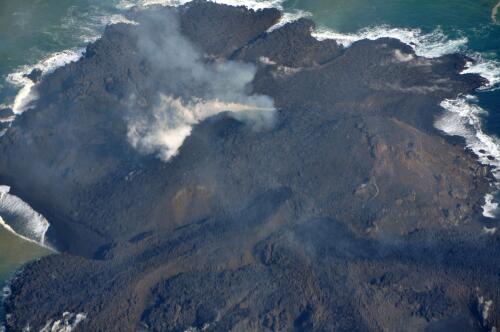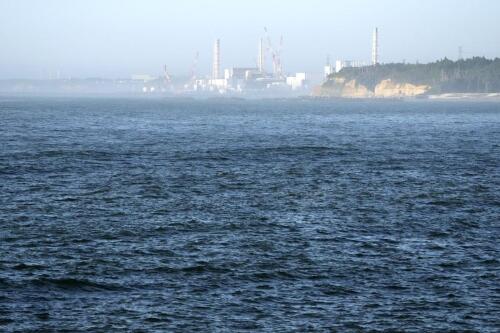Japan
Ten years after a new islet born in a massive eruption nearby swallowed it, remote Nishinoshima island in the Ogasawara island chain is still showing signs of volcanic activity. A survey from an Asahi Shimbun aircraft on Nov. 3 confirmed white fumarolic gas rising from a central crater and the slopes and surrounding sea areas turned brown and green. The activity puts the island’s recovering ecosystem at risk, which has seen a decrease in the number of seabirds. In the Ogasawara island chain, eruptions have occurred at Fukutoku-Okanoba, an undersea volcano, and Iwoto, a volcanic island. “The entire Ogasawara island chain is now in a period of very active volcanic activity,” said Setsuya Nakada, a volcanic geologist and professor emeritus at the University of Tokyo, who was aboard the aircraft. On Nov. 20, 2013, an eruption occurred on the seafloor near Nishinoshima, about 1,000 kilometers south of Tokyo, creating a n...
TOKYO — The release of a third batch of treated radioactive wastewater from Japan’s damaged Fukushima nuclear plant into the Pacific Ocean ended safely as planned, its operator said Monday, as the country’s seafood producers continue to suffer from a Chinese import ban imposed after the discharges began. Large amounts of radioactive wastewater have accumulated at the nuclear plant since it was damaged by a massive earthquake and tsunami in 2011. It began discharging treated and diluted wastewater into the ocean on Aug. 24 and finished releasing the third 7,800-ton batch on Monday. The process is expected to take decades. The discharges have been strongly opposed by fishing groups and neighboring countries including China, which banned all imports of Japanese seafood, badly hurting Japanese producers and exporters of scallops and other seafood. The plant’s operator, Tokyo Electric Power Company Holdings, said the...
The 2024 Nobel Peace Prize has been awarded to Nihon Hidankyo, the Japan Confederation of A- and H-bomb Sufferers Organizations. Many of these witnesses have spent their lives warning of the dangers of nuclear war – but initially, much of the world didn’t want to hear it. “The fates of those who survived the infernos of Hiroshima and Nagasaki were long concealed and neglected,” the Nobel committee noted in its announcement. Local groups of nuclear survivors created Nihon Hidankyo in 1956 to fight back against this erasure. Atomic bomb survivor Masao Ito, 82, speaks at the park across from the Atomic Bomb Dome in Hiroshima in May 15, 2023. Richard A. Brooks/AFP via Getty Images Around the same time that Nihon Hidankyo was formed, Japan produced another warning: a towering monster who topples Tokyo with blasts of irradiated breath. The 1954 film “Godzilla” launched a...


